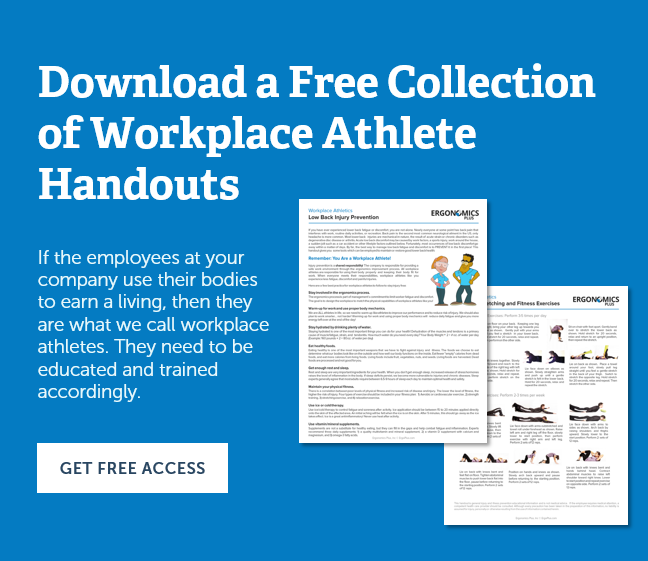Editor’s Note: Injury prevention and wellness handouts are an effective (and inexpensive) way to educate and motivate employees to use good work practices and take care of their bodies.
Scroll to the bottom of this post for the free Wellness Handout PDF file.
–
What is Diabetes?
Diabetes mellitus is a group of diseases with high levels of blood glucose (sugar). This can happen from problems with insulin being produced, how your body uses insulin or both.
Insulin is the hormone that is needed to convert sugar, starches and other food into energy needed for daily life.
The exact cause of diabetes is not known. Genetics and environmental factors appear to play roles.
Type 1
Type 1 diabetes is usually diagnosed in children and young adults, and was previously known as juvenile diabetes. In type 1 diabetes, the body does not produce insulin.
Type 2
Type 2 diabetes develops when the body does not use insulin properly. In response to this, the pancreas produces more insulin. Over time, the pancreas will not make enough insulin for the body’s needs. This results in increased amounts of glucose in the blood while the cells are starved of energy.
Diabetes Facts
- 25.8 million people in the United States (8.3% of the population) have Diabetes
- 95% of Diabetes cases are Type 2
- Before people develop type 2 diabetes, they almost always have “prediabetes” — blood glucose levels that are higher than normal but not yet high enough to be diagnosed as diabetes.
- There are ~ 79 million people in the United States with prediabetes
Managing Diabetes in the Workplace
Employers:
- Ensure healthy options are available whenever food is served in the workplace.
- Help employees avoid and manage stress (which can cause high blood sugar and high blood pressure).
- Encourage physical activity through gym memberships, on-site facilities or walking clubs during lunch hours.
- Provide regular breaks; discourage employees from skipping meal breaks.
- Foster a culture that encourages a healthy work-life balance.
- Encourage employees to get regular health checkups.
Employees:
- Wear medical identification jewelry. If you ever need medical assistance at work, the emergency medical personnel will know you have diabetes.
- Plan ahead. The biggest challenge many people with diabetes face is access to meals and breaks. Have snacks readily available should you need to treat a low.
- Take your equipment with you. Keep your blood glucose meter and supplies where you can reach them. Don’t leave blood glucose meters or insulin in the car. Extreme temperatures can affect them.
- Keep good diabetes control. The best thing you can do to remain productive is to stay healthy. Don’t let your diabetes get so far out of control that you’re not able to work. If you’re eating well, exercising, and controlling your blood sugars, you will have a productive work life.
Diabetes Prevention
Here is the good news – you can significantly reduce your risk for developing type 2 diabetes by developing and maintaining a healthy lifestyle!
By eating a healthier diet, increasing your levels of physical activity and maintaining a healthier weight, you are greatly reducing your risk of developing type 2 diabetes.
